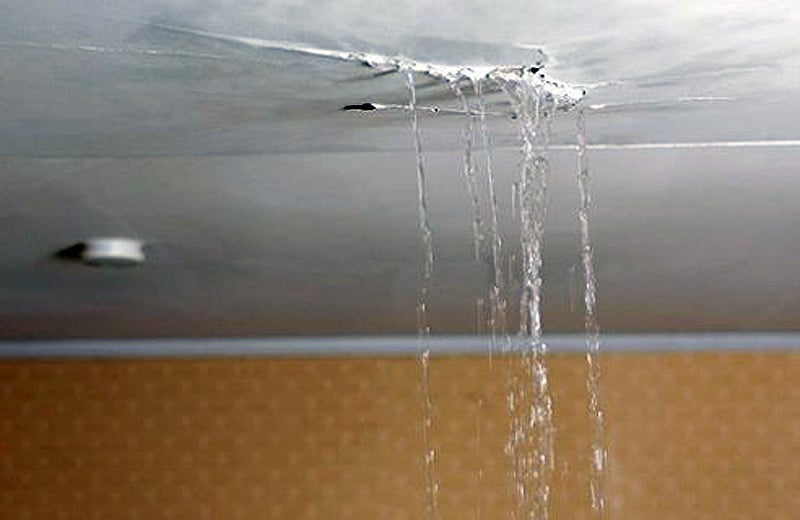Pinpoint Six of Commonest Leak Factors Inside Your House
Pinpoint Six of Commonest Leak Factors Inside Your House
Blog Article
Are you interested in advise around Top Causes of Home Water Leaks?

Leakages not just cause waste of water but can also trigger unnecessary damage to your house and also promote unwanted natural development. By looking as well as understanding for day-to-day scenarios that create leakages, you can shield your home from future leakages and unnecessary damages.
Instant temperature adjustments.
Severe temperature changes in our pipes can cause them to broaden as well as acquire suddenly. This expansion and tightening may cause fractures in the pipelines, especially if the temperature level are below freezing. It would be best if you kept an eye on exactly how your plumbing works. The presence of the formerly mentioned conditions frequently indicates a high threat.
Rusty water supply
This could be the reason of discoloration or warping on your water pipelines. If our plumbing system is old, consider changing the pipes since they are at a higher danger of deterioration than the newer designs.
Defective Pipe Joints
Pipe joints can degrade over time, resulting in water leakages. If you have loud pipelines that make ticking or banging noises, especially when the warm water is transformed on, your pipeline joints are possibly under a great deal of stress.
Trespassing roots
Many water leakages start outside the house rather than inside it. You may notice damp spots or sinkholes in your yard, and also that might suggest that tree roots are getting into water lines causing water to seep out.
Poor Water Connectors
Sometimes, a leakage can be brought on by loosened tubes and pipes that supply your home appliances. Usually, shifting is what causes the loosened water Links. You might discover when it comes to a cleaning device, a hose pipe may spring a leak due to trembling during the spin cycle. In case of a water links leak, you may notice water running straight from the supply line or puddles around your home appliances.
Blocked Drains
Clogged drains might be frustrating and inconveniencing, yet they can often end up causing an overflow leading to burst pipelines. Maintain eliminating any kind of products that might drop your drains that might clog them to avoid such troubles.
All the above are sources of leaks but not all water leakages result from plumbing leaks; some leakages could come from roofing system leakages. All leaks should be repaired instantly to prevent water damage.
Leakages not only create waste of water but can also create unnecessary damage to your residence and advertise undesirable organic development. By looking as well as comprehending for daily situations that cause leakages, you can safeguard your home from future leakages and unneeded damages. Today, we will look at six leak creates that may be triggering your pipes to drip.
At times, a leak can be caused by loose hoses as well as pipelines that provide your appliances. In situation of a water links leak, you might see water running directly from the supply line or pools around your devices.
TYPES OF WATER LEAKS YOU SHOULD BE FAMILIAR WITH
Shower Fixture Water Leaks
If you notice a water leak near your shower fixture, perform an inspection to confirm if you are able to find broken caulk lines. As your shower fixture becomes older, it is not uncommon for water to leak onto the other side of the frame. To fix this type of plumbing leak, scrape off the old caulk and run a new bead of it around the shower fixture to seal up any fractured crevices and holes.
Bathtub Drainage Water leaks
To fix this type of leak in a bathtub, remove the drain flange and clean it. Next, you should also remove the rubber gasket located beneath the tub’s drain hole. Buy a replacement gasket that matches the old version and install it in the same location. Once the drain flange and rubber gasket are installed, apply a small amount of silicone caulk to the drain to prevent water leakage below your tub.
Water Pipe Leaks Behind Walls
Issues such as discolored grout and loose shower tiles may be caused by a water pipe leak behind the walls in your bathroom. To fix this plumbing leak, you will be required to remove the tiles, grout, or caulk in your shower. Once the tiles in your shower have been removed, perform an inspection of the drywall to confirm if it’s moist or wet. If you notice water marks or mold on the wall, this is an indicator of a water pipe leak.
Toilet Leaks
Nobody likes a toilet leak. It can cause water damage to the subfloor, joists, or even the ceiling in the room below. To combat this type of water leak, you will need to reinstall your toilet with a brand new ring of wax. If the toilet sits uneven, be sure to add toilet shims to correct the issue. Do you notice a broken bolt slot or flange? We recommend performing a new metal flange installation to remediate this issue.
Sink Water Leaks
To prevent damage to the beautiful counter tops in your kitchen or bathroom, tighten the base of your sink to prevent a water leak. Next, scrape away any old caulk around the sink and apply a fresh coat. Prior to using the kitchen or bathroom sink, you will need to secure the fixture to the countertop with the clips located beneath the sink rim to prevent a water leak.
https://www.fenwickhomeservices.com/blog/6-types-of-water-leaks-you-should-be-familiar-with/

Do you appreciate more info about How to Find Water Leaks? Make feedback directly below. We would be pleased to hear your ideas about this post. Hoping that you visit us again soon. For those who enjoyed our blog entry kindly remember to share it. I enjoy reading our article about How to detect water leaks in your home.
Don't delay; get expert help. Report this page